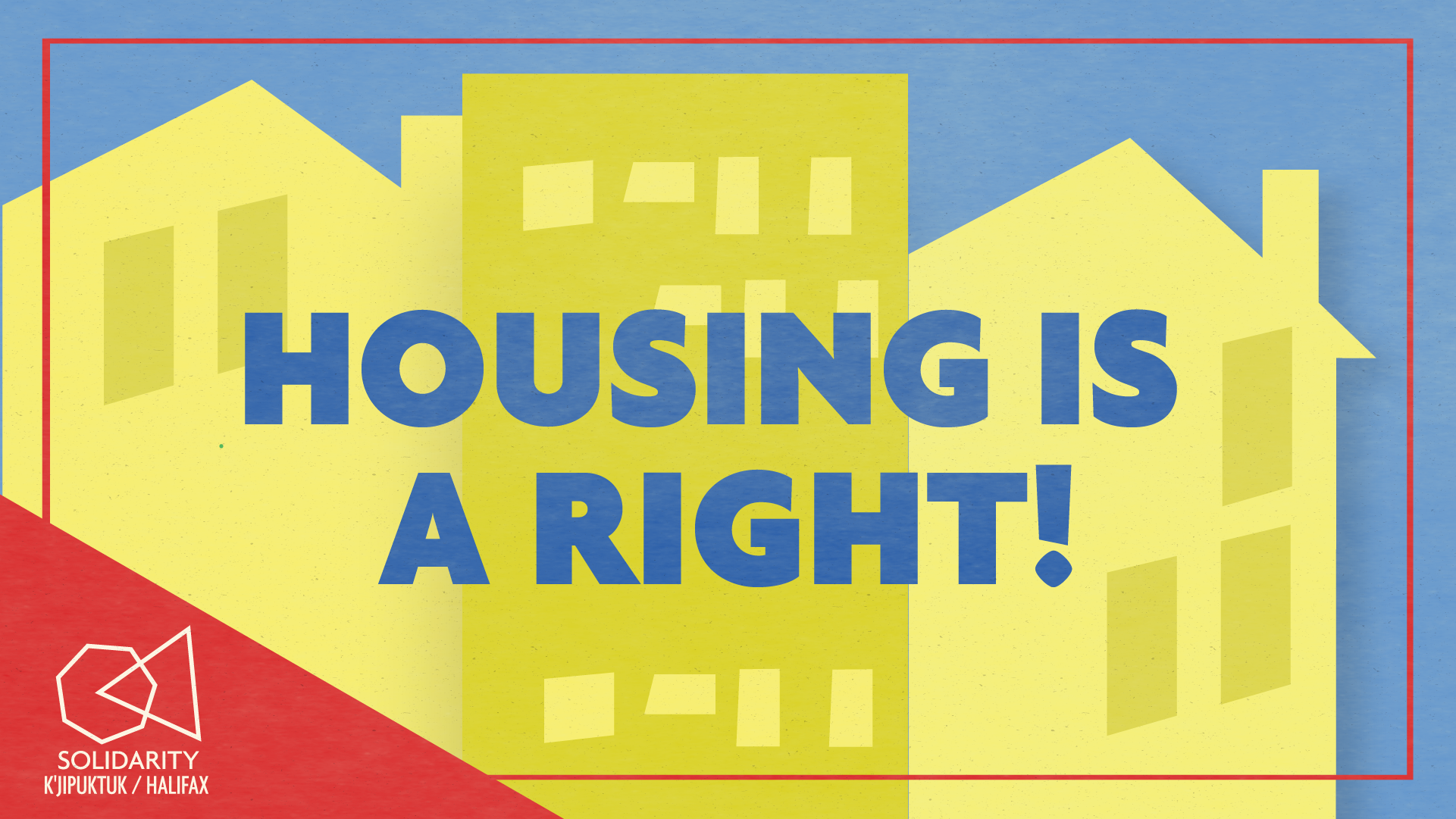
What is social housing?
Social housing is a broad term which encompasses many different non-market or partially non-market housing schemes. However, here, we will focus on public housing.
Public housing attempts to collectivise the provision of housing, through the state as opposed to purely market-based housing schemes which rely upon the individual to purchase housing or rent housing, and put the costs upon the person seeking housing as a consumer.
What is the situation in Nova Scotia?
In Nova Scotia, public housing is administered by Housing Nova Scotia and locally, by local Housing Authorities, who have the responsibility of maintenance, operation, and administration of units. Effectively, HNS devolves its responsibilities to these local HAs, who are left to manage the finances alone. HNS also administers the rent-supplement programme to enable people to access private-market housing (effectively subsidising and underwriting private landlords’ profit).
In Nova Scotia, 17, 600 families and seniors live in public housing, and 1700 people access the rental supplement programme.[1] No significant construction of housing stock has occurred since the 1990s, and the shortage is a housing crisis in itself; as of March 2020, 5400 people are on the waitlist for social housing.[2]
In Nova Scotia, our public housing sector has been the subject of decades of austerity, privatisation, devolution of responsibility, and increasing bureaucratisation and “landlord” consciousness by housing authorities. Thus, merely increased investment is unlikely to better the situation, and more comprehensive challenges are needed (see below).
Why should I care?
In general, social housing challenges the “common sense” of market-based, liberal solutions, and challenges the power of landlords; all while prefiguring alternative models of housing to that of capitalist social relations. Sociological studies show that people living in rental housing and cooperative housing tend to have more “egalitarian outlooks” and are less “market-oriented,” [3] this shows that our housing has an ideological pressure, not to mention that providing for the needs of workers through the state or through worker self-organisation is a powerful tool to build capacity and working-class identity.
What is the ‘public option’?
Public housing has a long history, notably in Vienna. The provision of high quality, affordable houses through local government was won through workers’ struggle and mass social-democratic politics. This historic victory, and contemporary reality has crystallised working-class identity and solidarity, and is a strong counterweight to private housing. Public housing still provides 62% of homes in the city, spread throughout all districts to prevent ‘postal code stigma.’[4]
The nation-state still retains enormous capability to house its population. For instance, Sweden, during its famed miljonprogrammet, housed millions of Swedes and their families in massive, planned communities with many amenities, and affordable low-rise buildings and detached single-family dwellings. Today, 25% of Swedes live in houses built through this programme. [5]
Where do we go? From crisis to housing security
We have outlined some alternatives and proposals; with state intervention in housing, socialised housing can look like a robust public housing programme, attuned to local needs (housing insecurity manifests differently in rural NS, than in Halifax). Public housing can be administered through local, municipal governments, or through the province theoretically, however, it is effectively a football at this juncture, with public housing funded through the province but administered by municipal-level organisations. Any public housing strategy will need to get it back on the provincial docket and emphasise municipal engagement. Re-investment in public housing would have to account for deferred maintenance in existing stock, and the creation of robust, attractive stock. Another draw is that it could function as a part of a green jobs programme: producing ecologically sustainable dwellings will take many workers, and this could serve as an incentive to get organised labour ‘on side’.
Lastly, care should be taken to de-link class, income, and social status as barriers to/preconditions for access to social housing. Far from merely a provision of housing to attenuate the housing crisis, it should be properly conceived as a first step towards the truly universal right to housing. Moreover, the perpetual rights of indigenous peoples to this land must be borne in mind in the design, creation and implementation of any such programme, or else First Nations may again be excluded from housing and dignity on their own land.
[1] https://housing.novascotia.ca/programs/public-housing-and-other-affordable-rental-programs
[2] https://www.turnerdrake.com/blog/2021/02/23/WhatInTheHousing.aspx
[3] https://jacobinmag.com/2019/06/we-once-had-the-answers
[4] https://jacobinmag.com/2018/11/beautiful-public-housing-red-vienna-social-housing